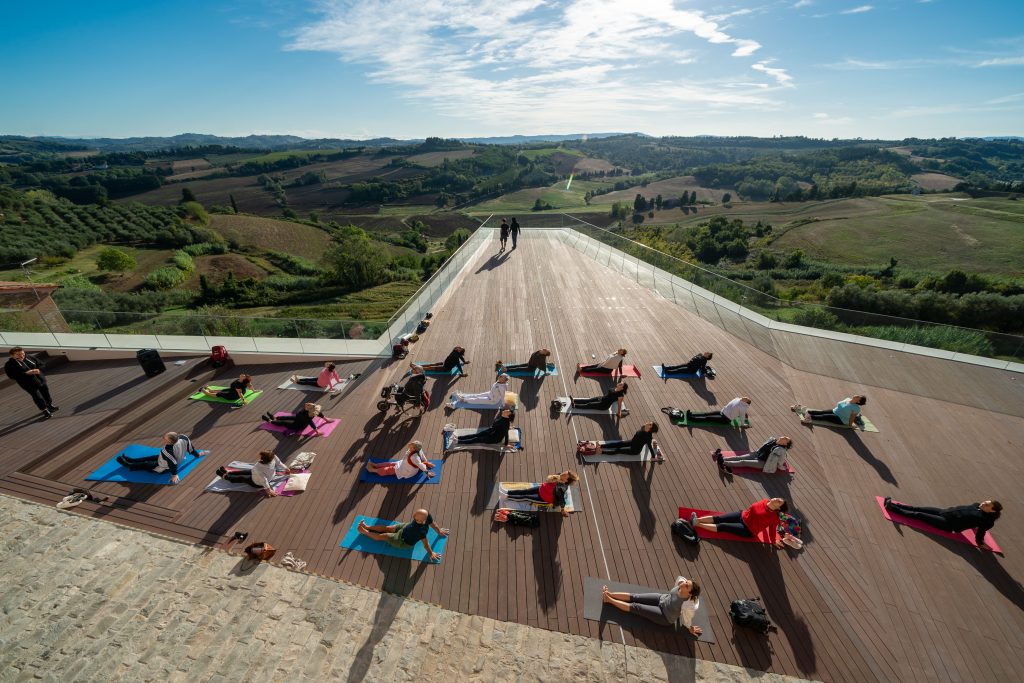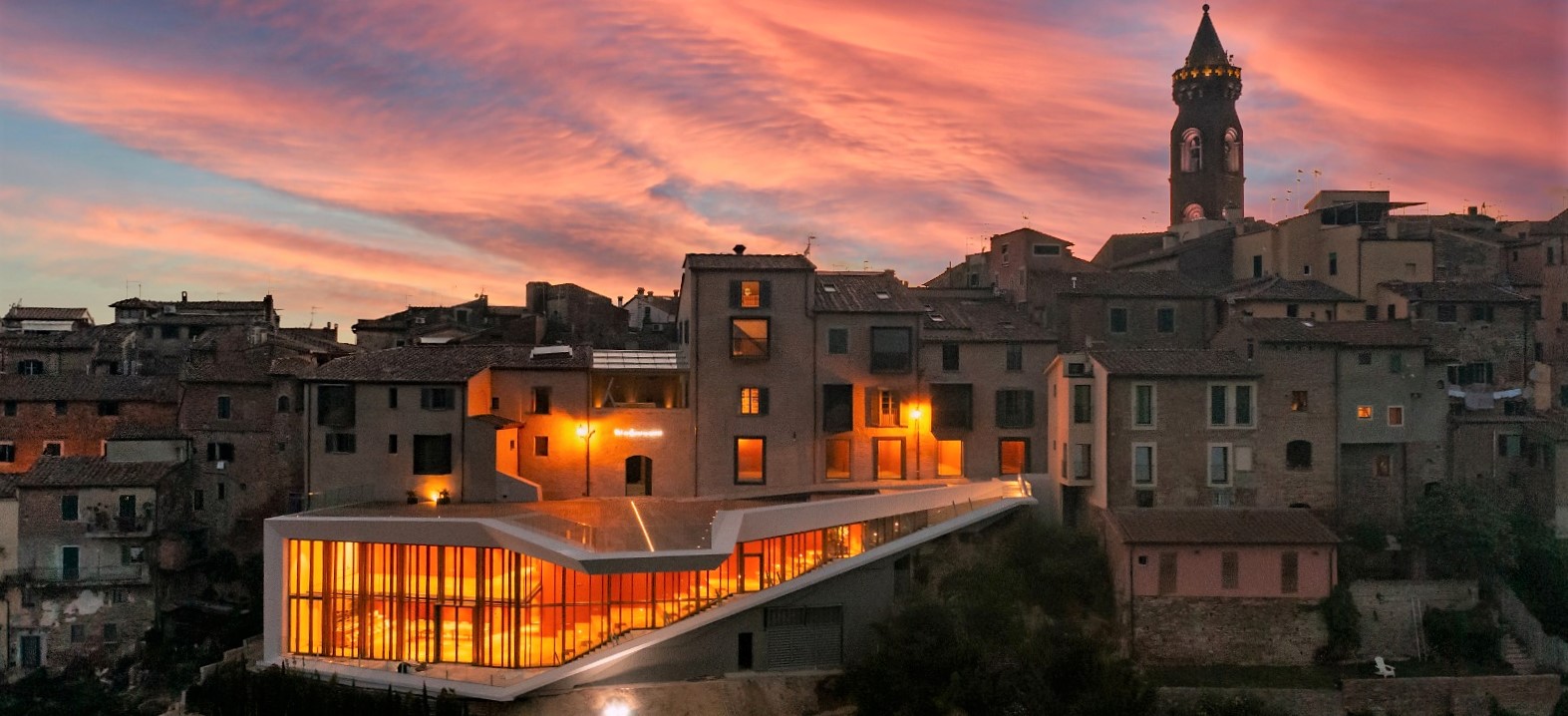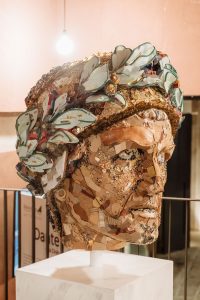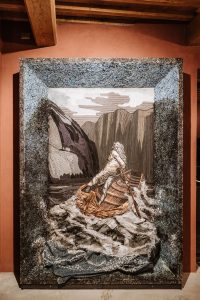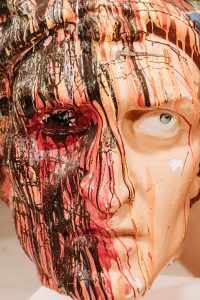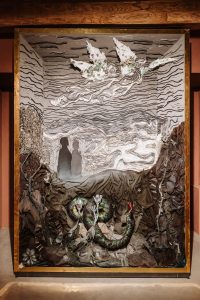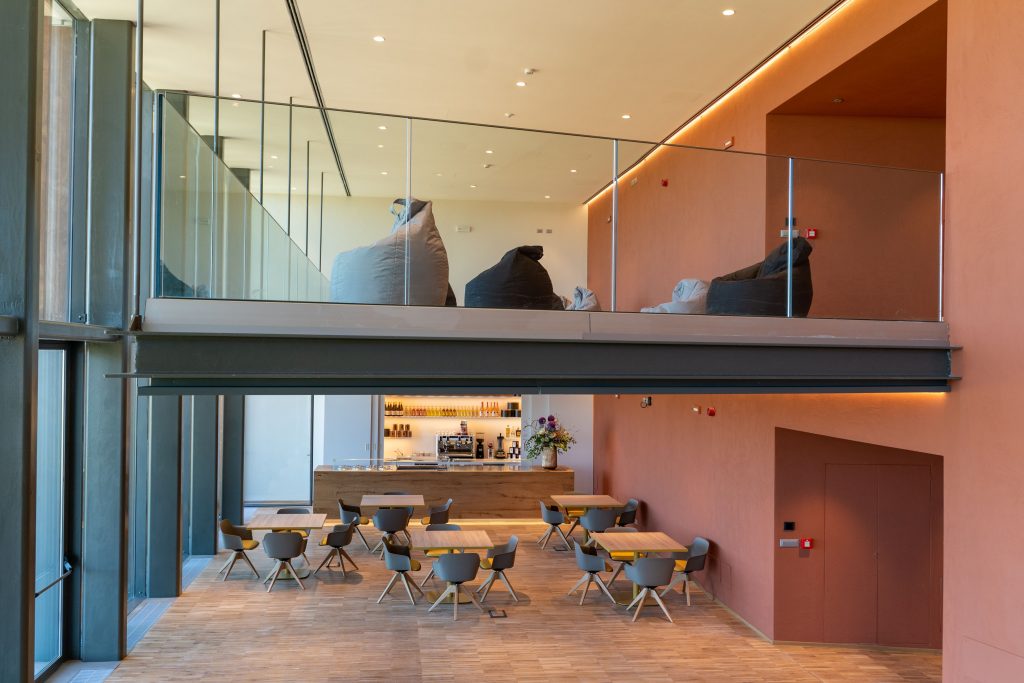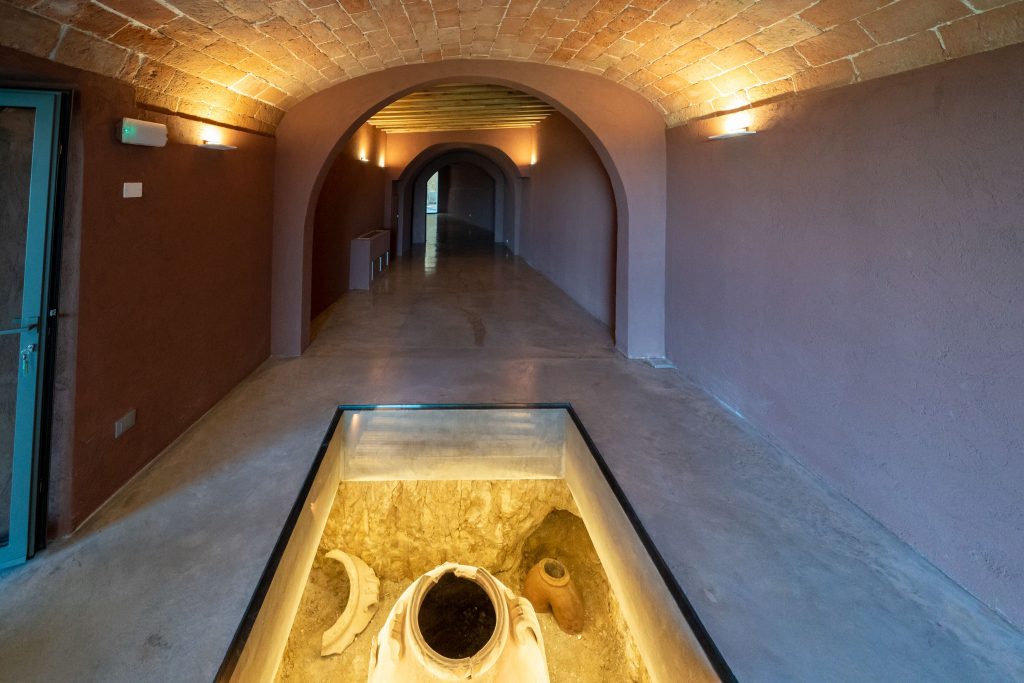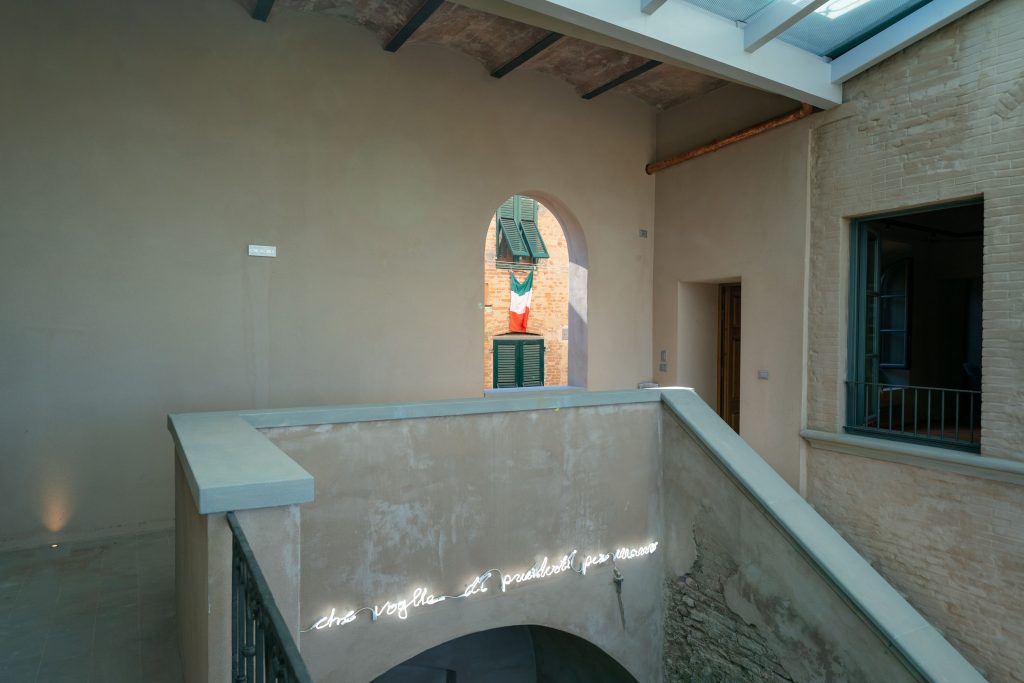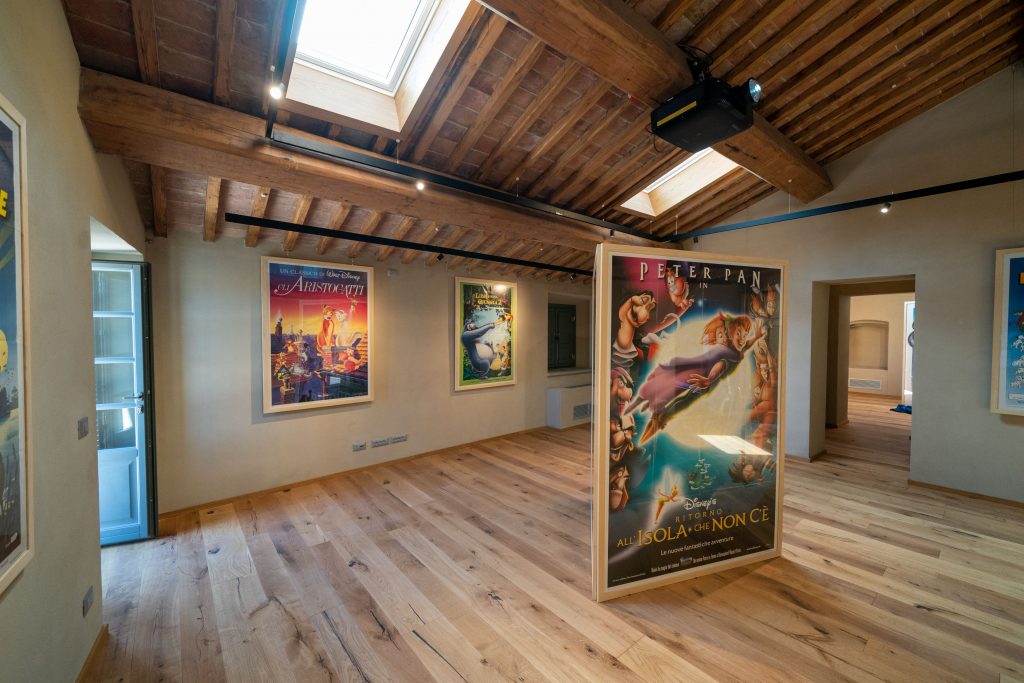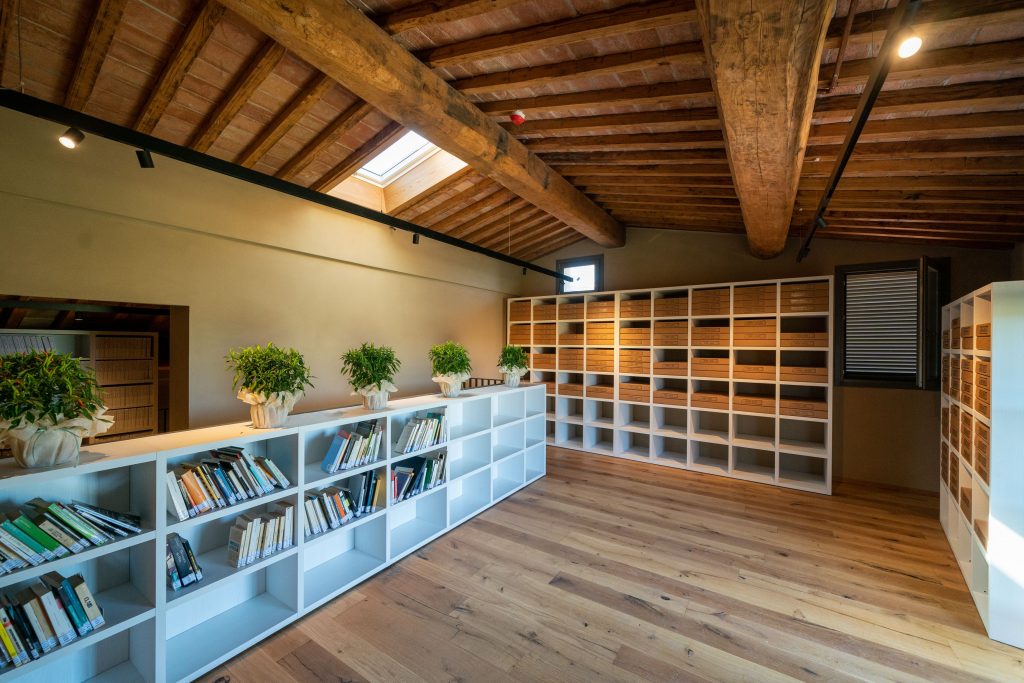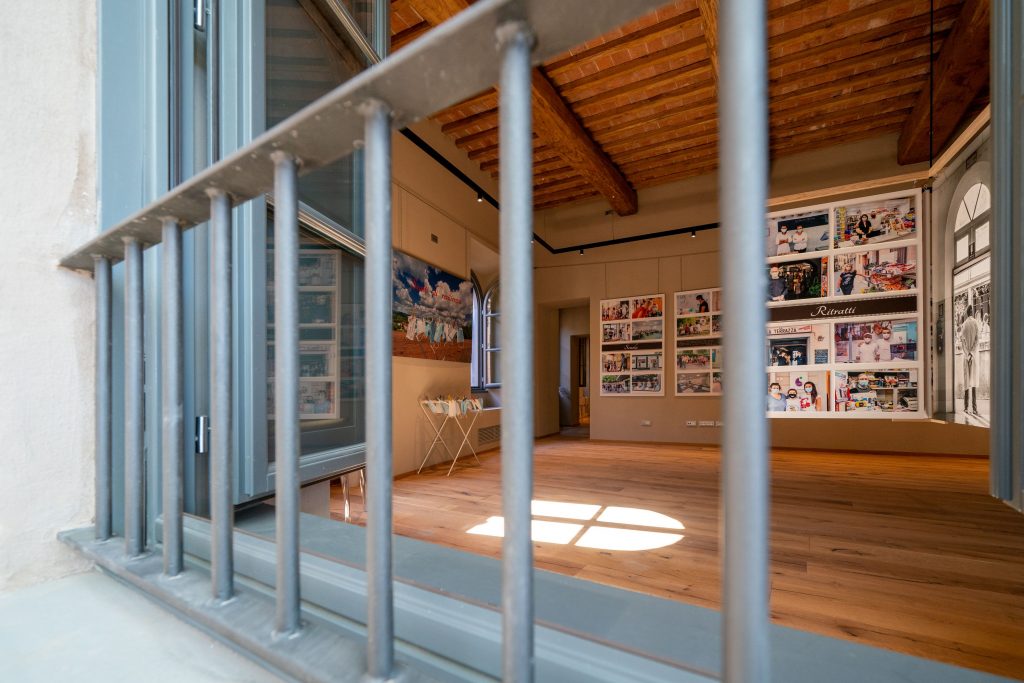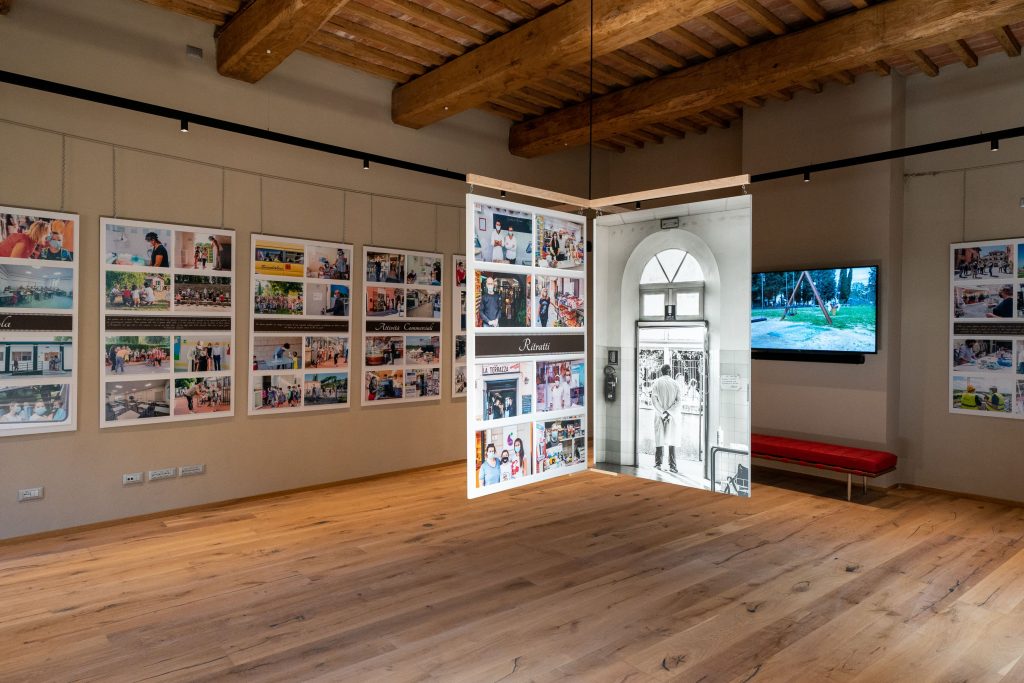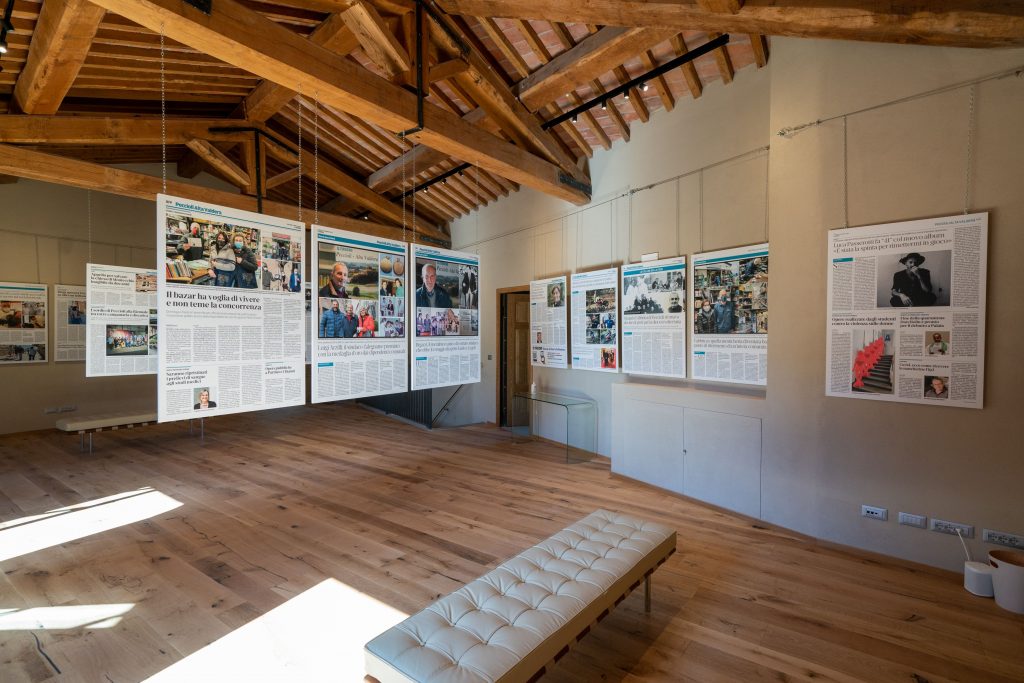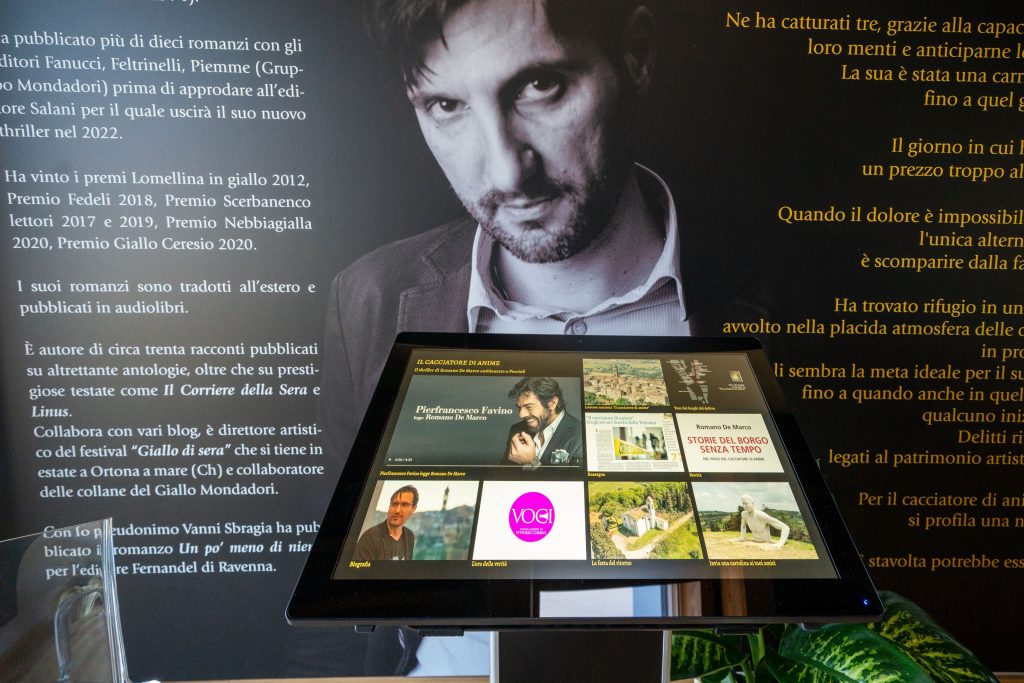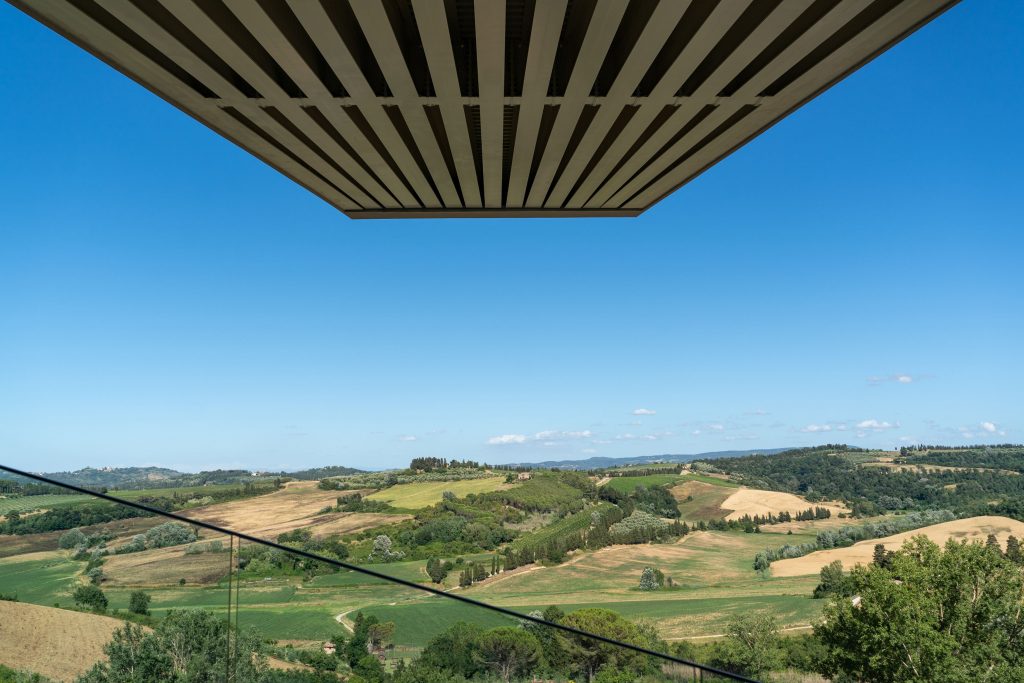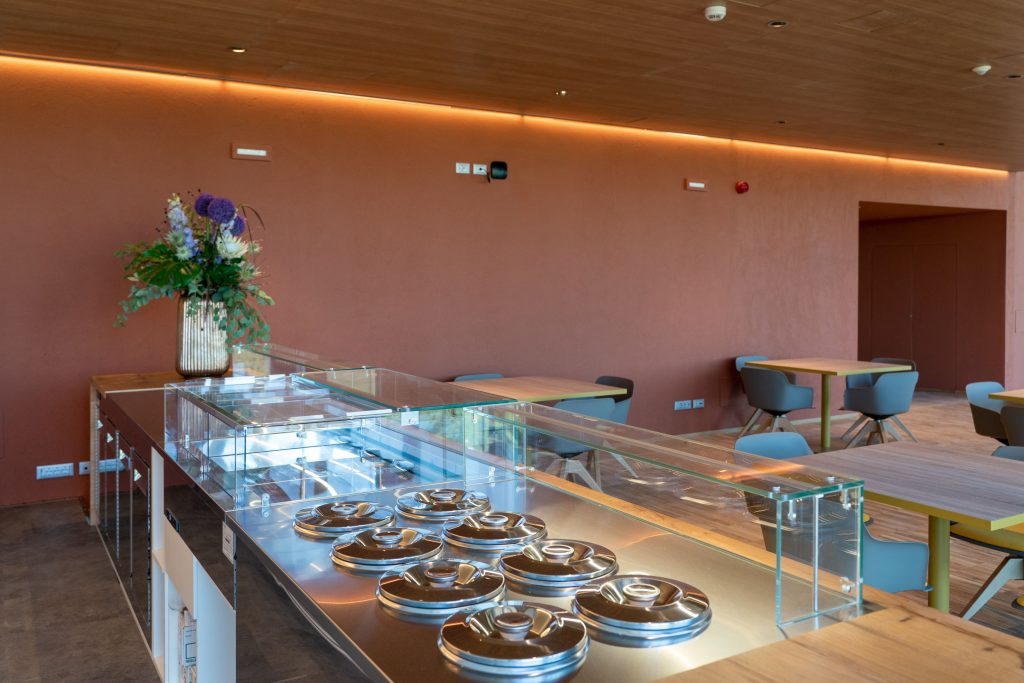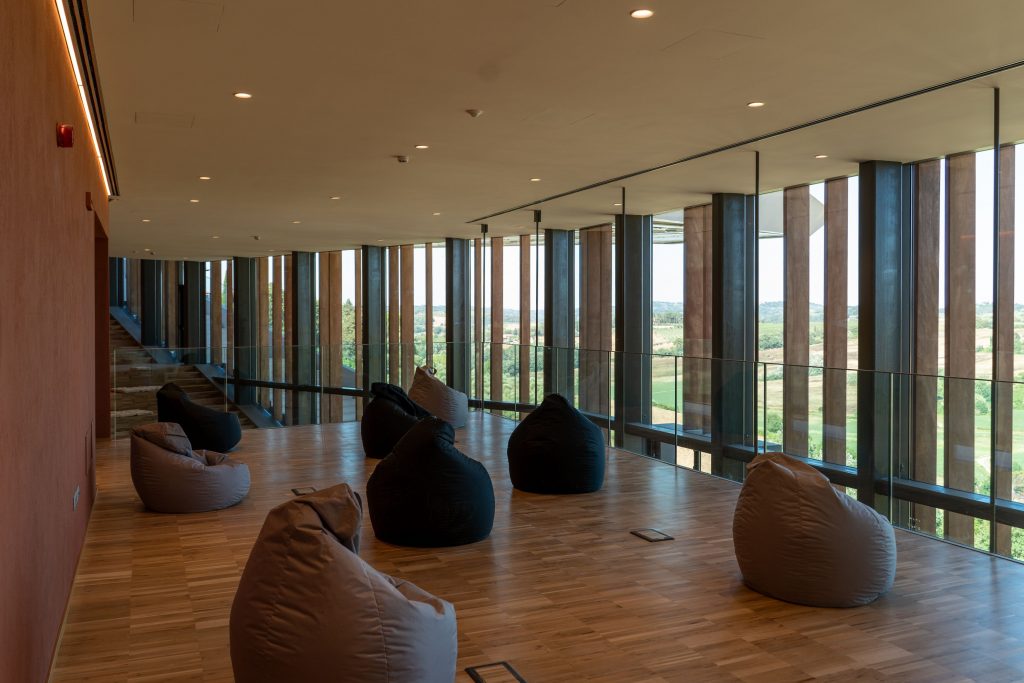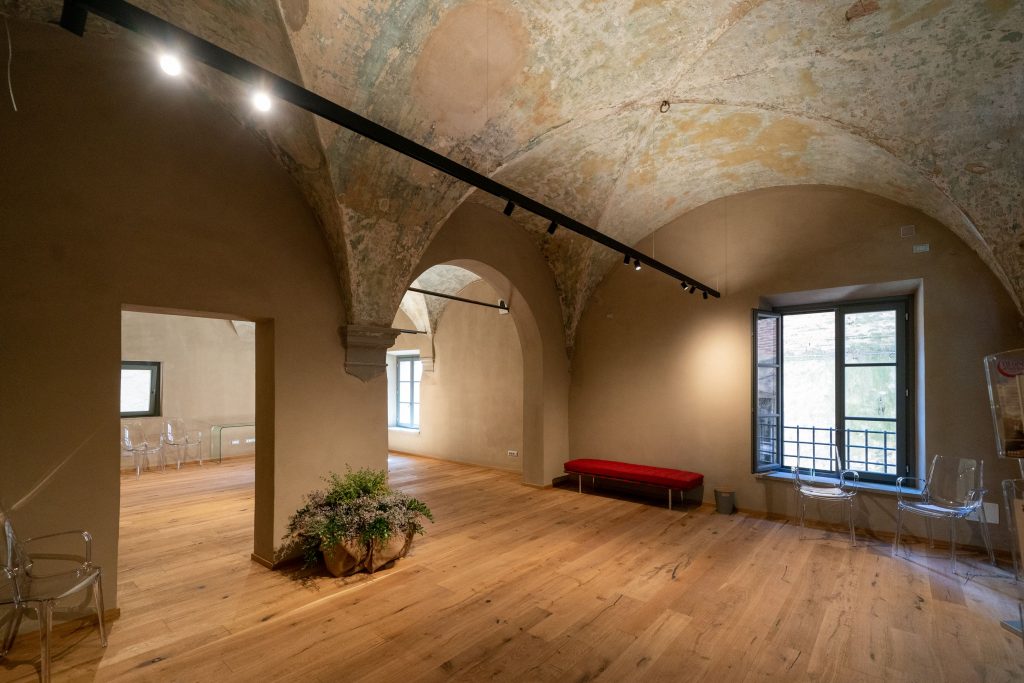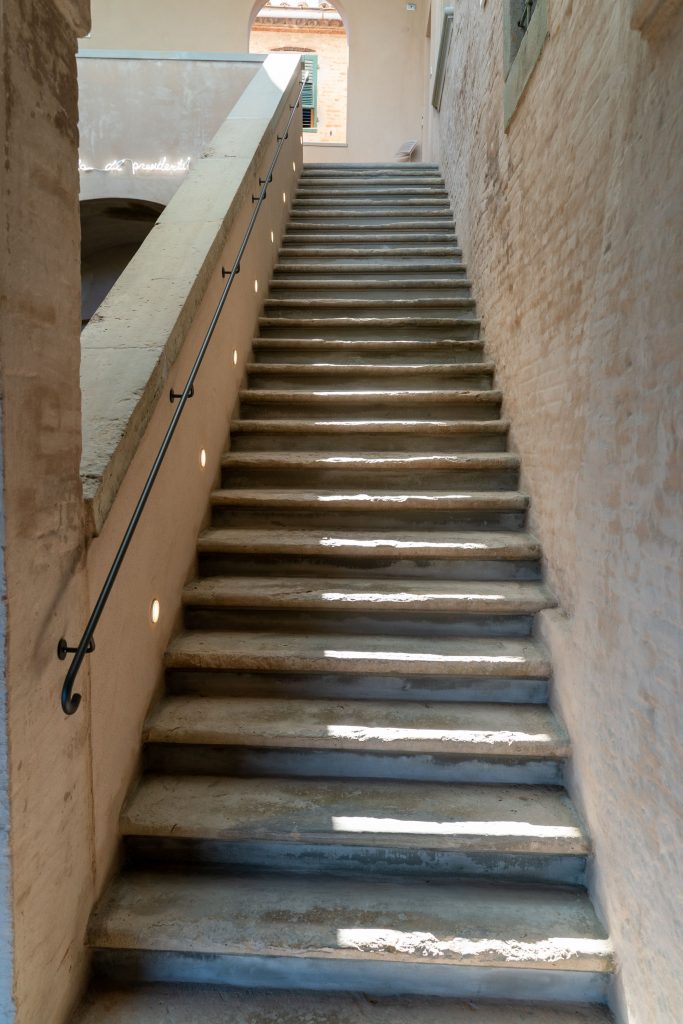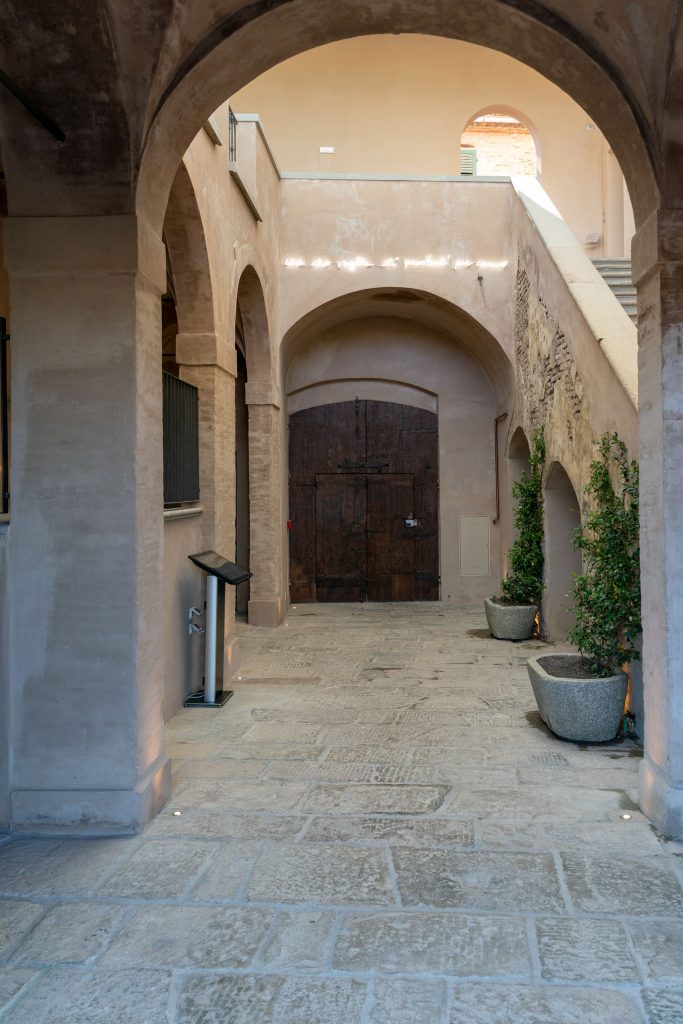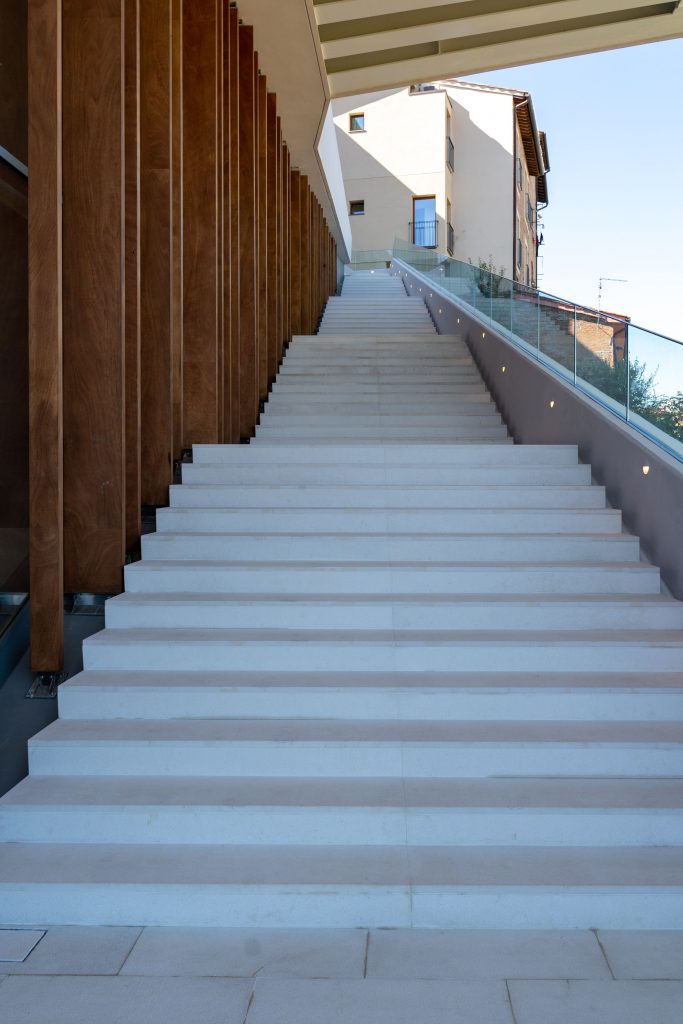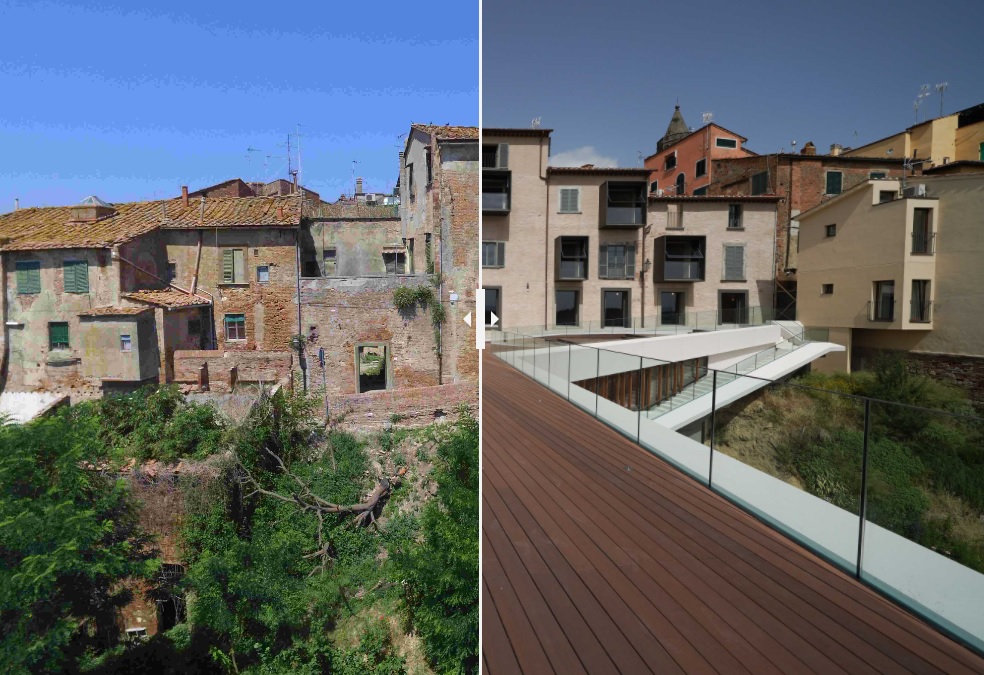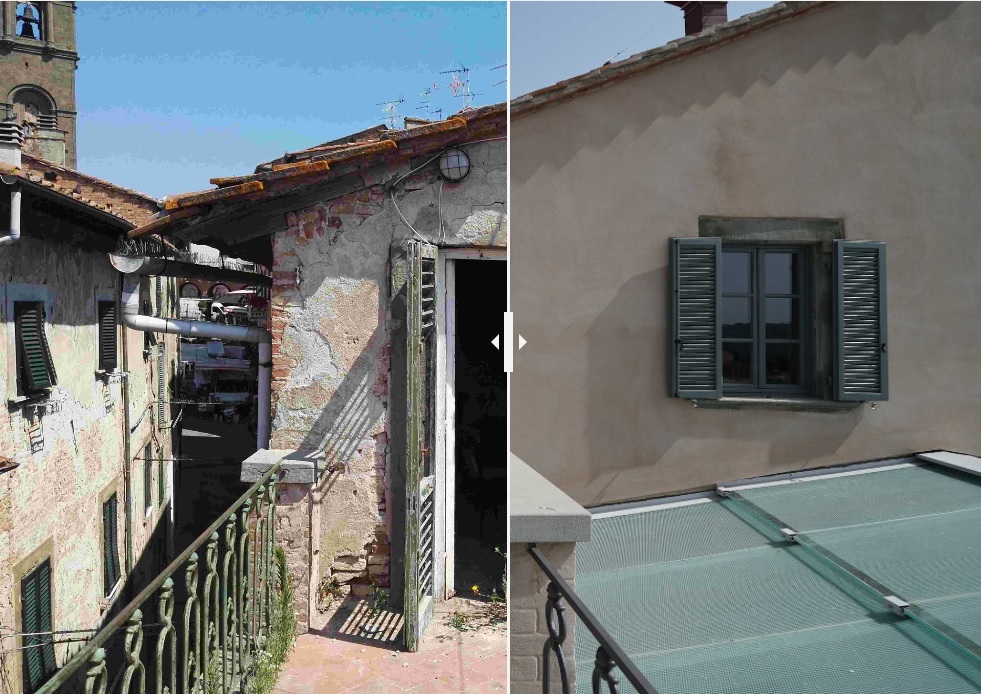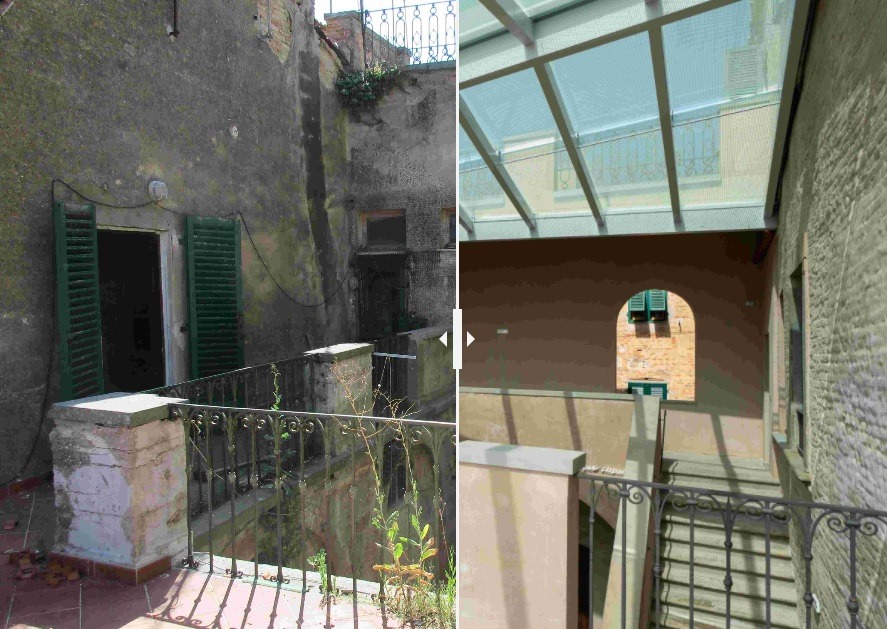Renovated to a design created by the architect Mario Cucinella, the palazzo hosts numerous permanent and temporary exhibitions.
Its defining feature is a large panoramic terrace overlooking the valley and it has a cafeteria inside.
Dante Alighieri Exhibition
Peccioli is currently hosting at the palazzo a project conceived by SCART* in collaboration with the Academies of Fine Arts of Florence, Ravenna and Carrara and the Community of San Patrignano. The project, “Dante and the Divine Comedy”, uses the concept of Trash Art and the inspiration of Dante’s masterwork to show that rubbish can be recycled into something beautiful and worthwhile.
“Dante and the Divine Comedy” also marks the 700th anniversary of the death of the great poet. The project proposes a challenge to the students of the three Academies, inviting them to interpret the 100 cantos of the Divine Comedy using the modern techniques of Trash Art.
Plastic scraps and strips of leather, hinges, buttons, metal accessories and glass are just some of the recycled materials through which Dante’s works have been reinterpreted. Taking inspiration from the engravings of Gustave Dorè, the nineteenth century French artist famous for his wood prints of the Divine Comedy, six large works – eight foot high and four foot wide – have been created to illustrate the cantos describing Hell, Purgatory and Paradise.
Also on show are six sculptures representing the head of Dante. All of these works copy in form the “Monument to Dante” sculpted by Enrico Pazzi and displayed in Piazza Santa Croce in Florence. Each of the three Academies interpreted the work using different styles and techniques reflecting their own differing academic and artistic aspirations: from Ravenna there was a focus on the historic importance of mosaic working, from Carrara an acknowledgement of a heritage of marble sculpting and from Florence a POP art influence.
The use of recycled materials helps to promote an important message about the circular economy. SCART and its young artists have produced something amazing and succeeded in giving shape and form to the extraordinary world imagined by Dante.
The project also featured a collaboration between SCART and the Community of San Patrignano, a drug rehabilitation charity. The Community was entrusted with the production of three heads of Dante and, working with great professionalism, it has produced an artistic interpretation that communicates a strong message. The results are tangible, visible at first glance. Those motionless heads, that slightly lost look that Dante displays, leave multiple interpretations for visitor to reflect upon. One can read in those eyes a desire to do well, a passion, a determination, the same things that, on a daily basis, carry forward the work of the Community.
So here is another emotional gift from SCART which, after 22 years of seeking beauty amongst the garbage, continues to amaze, communicate and raise awareness
Maurizio Giani
Marketing Director Herambiente S.p.A
The history of the palazzo
First mentions
Documents dating back to the mid-1400s record that ownership and use of the property in Via Carraia, together with other properties, was granted by the Salviati family to Giovanni Falcucci, that family’s attorney.
Salviati Family
From the mid-1500s the property was owned by a Piero di Almanno Salviati, uncle of Grand Duke Cosimo de’ Medici of Tuscany. The Salviati were a family of bankers and traders specializing in the silk and wool industries with interests extending as far afield as Constantinople, Bruges and London. Upon Pietro’s death the palazzo became the property of another important family, the Almeni, as a gift from Cosimo in recognition of the Almeni family’s loyalty to the Medici.
Almeni Family
The Almeni family originally came from Perugia, a location which allowed them to cultivate political and commercial relations both with Rome and with the Medici in Florence. Sforza Almeni was one of Cosimo de’Medici courtiers and he received from him the Peccioli estate, including all its farms in 1565. On Sforza’s death the estate was inherited by his brother Evangelista, a member of the Order of the Knights of Santo Stefano which was established by Cosimo de Medici to fight the Turks and other pirates. The last surviving members of the family, Isabella Nerli and Eleonora Bonaccorsi, returned ownership of the estate to Grand Duke Pietro Leopoldo and it was subsequently sold to the Berte family.
Dufour Berte Family
In 1775, Giovan Filippo Berte bequeathed the palazzo to his nephew Edoardo Dufour on the condition that Edoardo and his descendants took the family name Dufour Berte. Eduardo chose the palazzo as his family’s main residence and we find evidence of this within the arch of the main doorway, where one can see, in wrought iron, the initials DB.
Recent History
In 1919 the palazzo and estate were sold to property company Fondi Rustici in Rome before passing into the hands of the Gerolamo Gaslini Charitable Foundation. In 2004 the palazzo and part of the estate was purchased by the Municipality of Peccioli jointly with a local company, Belvedere. Together they established Fondi Rustici which, in 2019, began to carry out the renovation and redevelopment programme developed by Mario Cucinella’s MCA studio.
